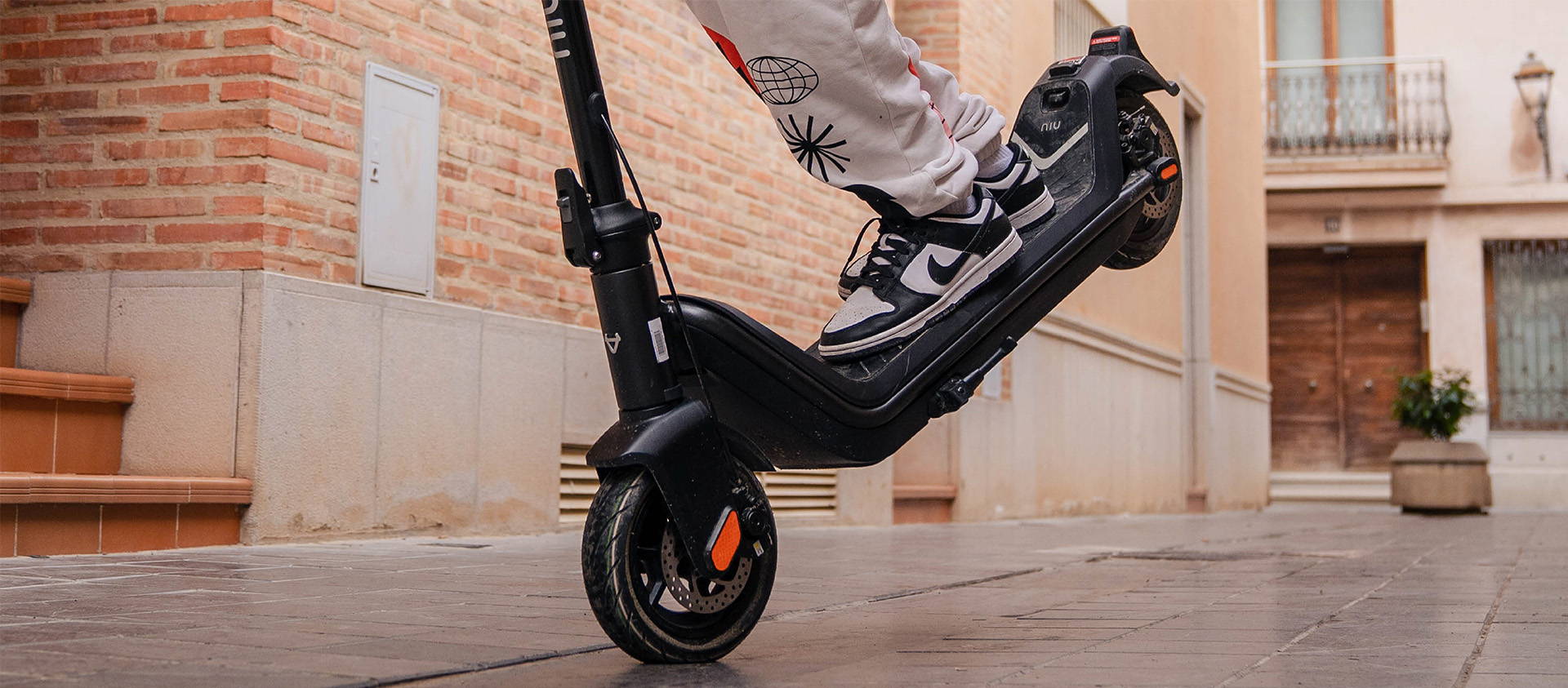When it comes to the lifespan of an electric scooter frame, the durability is largely determined by its material and structure. The most commonly used materials for electric scooter frames are aluminum and metal. While aluminum is lighter in weight, both materials can last for years with proper care and maintenance.
However, it's important to note that simply checking the material on the specification sheet won't give you the full picture of the frame's durability. The durability is also determined by the scooter design, including factors such as how much aluminum or metal is used in each part, how wide the deck is, and how thick the tube wall is. By taking these factors into consideration and choosing a well-designed electric scooter, you can help ensure that your scooter will last for many years to come.
What we're saying is, it's not that easy to identify the durability of a frame (without carrying out the proper tests) however, In general, the more material used in the frame construction, the stronger it will be (and also adding weight). Another tip is to check the warranty period of the scooter's frame, as a longer warranty period can indicate a higher quality and more durable frame.
Electric Components: Motor, Controller
The controller is the "brain" of an electric scooter, serving as its central hub that regulates the flow of electricity from the battery to the motor. Its quality is essential to the performance and lifespan of the scooter. Typically, a high-quality controller can last up to three years, while a medium-quality controller may last for one or two years.
One of the challenges with electric components like the controller or motor is that they are hidden inside the body of the scooter, making it difficult to determine their quality just by looking at the scooter's appearance. Instead, it's more reliable to check the warranty policy for the motor and controller.
Electric scooters with integrated wiring design may last much longer than those with exposed wires. This is because the wiring is hidden inside the scooter body, reducing the risk of damage from external factors. For example, the NIU KQi2 Pro electric scooter features an integrated wiring design that helps ensure its longevity and reliability.
Consumable Parts: Tires, Lights, Fenders
Consumable parts are components of an electric scooter that need regular replacement during normal use. However, replacement parts like tires, lights, and fenders are typically available from the manufacturer's shop, allowing you to extend the lifespan of your scooter. To find replacement parts for your NIU electric scooter, you can check here.
When it comes to tires, there are two widely used types: pneumatic and solid. Solid tires are highly durable as they cannot be punctured, but they are more commonly used in rental scooters. If you prioritize comfort during your daily use of an electric scooter, it's not recommended to use solid tires. Pneumatic tires provide a smoother ride and better shock absorption. While tubeless tires generally perform better than inner tube tires in terms of puncture resistance, self-healing tires are the best option for maximum durability and convenience.
How Warranty Policy Affects Your Scooter's Lifespan
Understanding the warranty policy of your electric scooter is important because it can affect the lifespan of your scooter. A good warranty policy can help ensure that your electric scooter is covered in case of any defects or issues that arise.
As you read through articles about electric scooters, you may notice that scooter warranties can vary for different parts, and it's not as simple as a one-size-fits-all "1-year warranty," "2-year warranty," or "3-year warranty." Therefore, it's important to carefully review the warranty policy before placing an order. For example, NIU's warranty policy includes a 2-year warranty on the battery, motor, controller, and frame, which essentially promises a minimum lifespan for your scooter. If you don't pay attention to the details and find that your "2-year warranty" only covers the battery or motor for 6 months, you may end up with a headache down the road. By understanding the warranty policy and ensuring that all parts are covered for an adequate period, you can help ensure that your electric scooter will last for many years to come.
Tips to Extend Your Scooter's Lifespan
To maximize the lifespan of your electric scooter, it's important to take good care of it. Here are some tips to help you do so:
Maintain your electric scooter regularly by keeping it clean and checking for any signs of wear or damage.
Charge your battery regularly and avoid overcharging it to prevent damage to the battery cells.
Avoid riding your electric scooter in extreme weather conditions, such as heavy rain or snow, to prevent damage to the internal components.
Replace any worn-out parts as soon as possible to prevent further damage and ensure the scooter continues to operate safely.
Store your electric scooter in a dry and secure location to protect it from the elements and potential theft.








